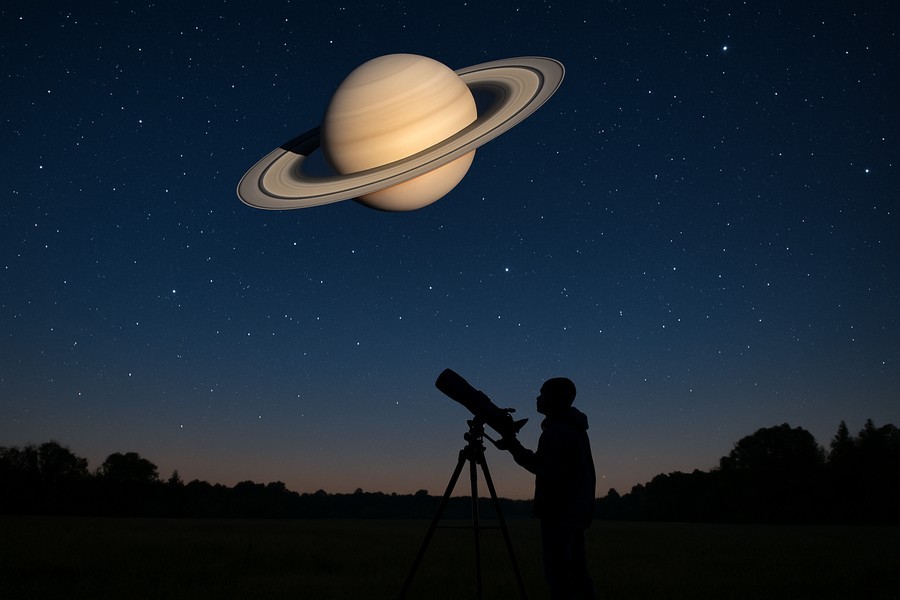
Get Ready for Saturn's Grand Appearance
Get ready for a celestial spectacle! Saturn, the gas giant with the iconic rings, is about to put on a show. Soon, it will be at its closest point to Earth, appearing larger and brighter than usual. This special event is called opposition. During this time, Earth will be directly between Saturn and the sun, forming a straight line. Because of this positioning, Saturn will seem to glow brightly, fully illuminated by sunlight.
This exciting celestial event only happens roughly every 378 days. So, if you're an aspiring astronomer or just someone who appreciates the beauty of the night sky, this is one event you won't want to miss.
Perfect Conditions for Viewing Saturn
During opposition, Saturn will be visible all night, rising in the east around sunset and setting in the west around dawn. Plus, the moon will be in its new phase, meaning its light won't interfere with viewing the ringed planet. These conditions provide an excellent opportunity for stargazing enthusiasts to observe Saturn's grandeur.
For an even better viewing experience, try to find a location away from artificial light. This light can make it harder to see objects in the night sky. Also, give your eyes 15 to 30 minutes to adjust to the darkness before you start observing. If you need to use a flashlight, opt for red light over white to preserve your night vision.
Finding Saturn in the Night Sky
Saturn will be found at the base of the Pisces constellation during this event. Despite its distance, Saturn is quite bright and easy to spot in the night sky. However, if you're having trouble locating it, don't worry! A skywatching app can be a handy tool for guiding your gaze to the right spot.
The best way to experience this event is through a pair of skywatching binoculars or a backyard telescope. With the right equipment, you'll be able to see Saturn's stunning rings in all their glory. During opposition, these rings experience a dramatic increase in brightness, a phenomenon known as the Seeliger effect.
The Seeliger Effect: A Luminary Spectacle
When Saturn is in opposition, its rings shine more brightly than usual. This is due to the direct sunlight reflecting off the rings and eliminating any shadows among the particles that make up the rings. This effect, known as the Seeliger effect, lasts for a few days around the time Saturn reaches opposition.
More Opportunities to See Saturn
Although the moment of opposition is centered around one particular day, Saturn takes a couple of weeks to approach and leave its position opposite the sun. So, if you miss the main event, don't worry! You'll still have a few days before and after to catch Saturn at its most radiant.
So, whether you're an experienced stargazer or just someone who enjoys looking at the stars, make sure to mark this event on your calendar. It's a rare chance to see Saturn, one of the most beautiful planets in our solar system, at its best.
